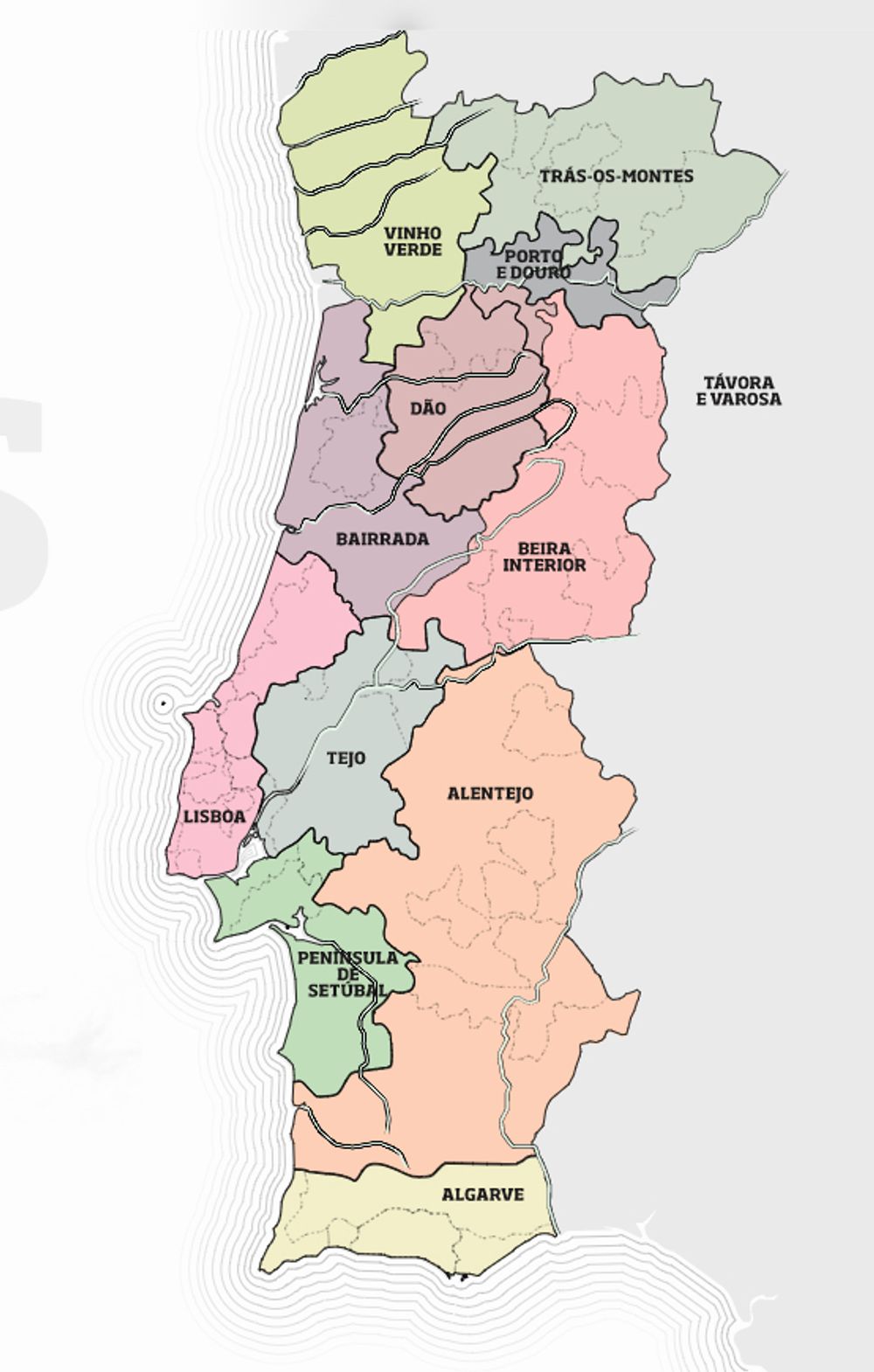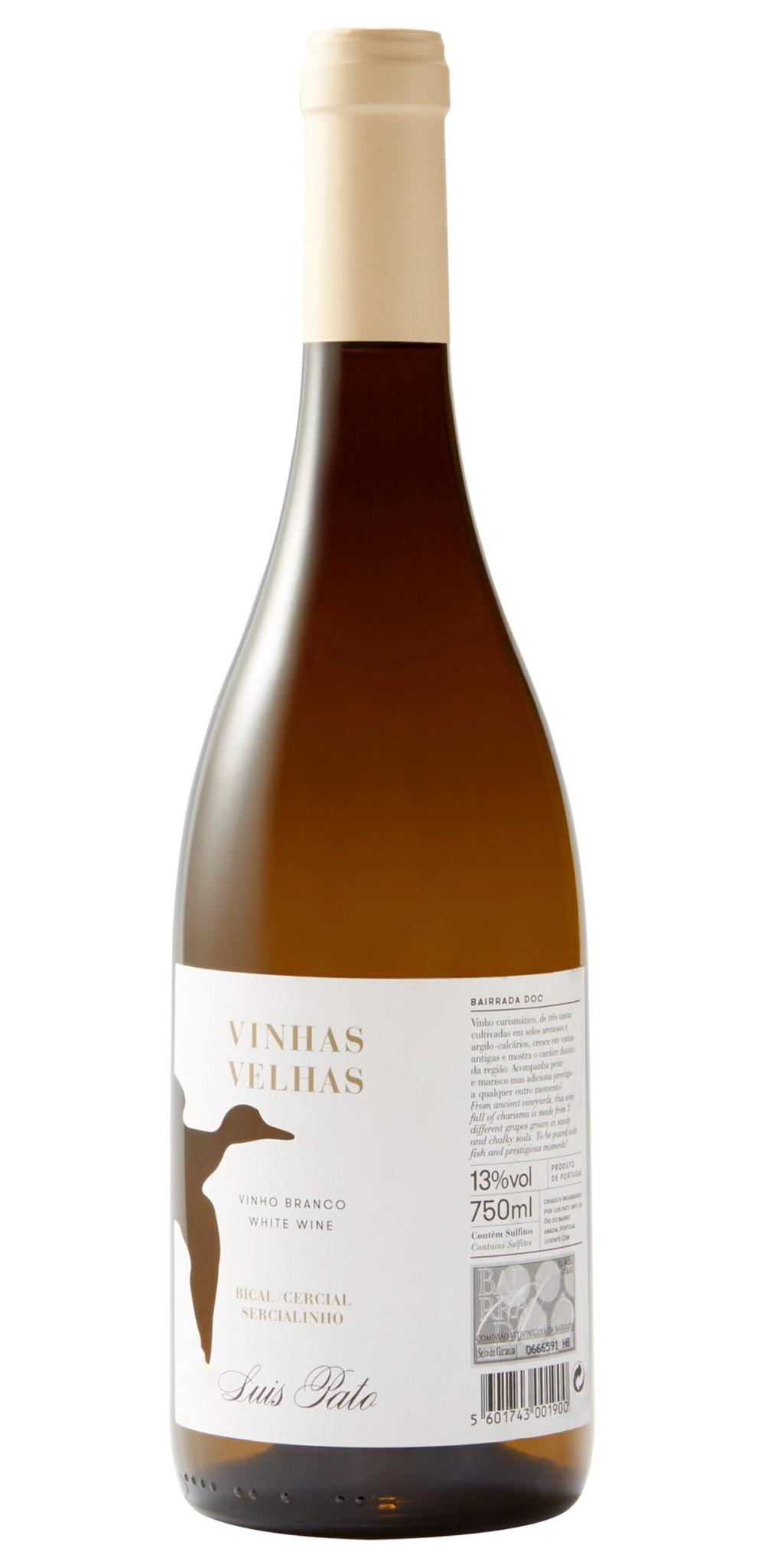Portugal is a wine country that keeps on giving when you consider it still has so many wine regions that are not widely known around the world. Like Bairrada. Jamie Goode believes its time has very much come.
I think it surprised a lot of people when Dirk Niepoort, proprietor of the eponymous Port house and famous for making some of the best table wines from the Douro, came out saying that he thought Bairrada might represent the best terroir in Portugal. What is he thinking?
Well, there’s the climate. Bairrada is in the Beiras region of northern Portugal, tucked in below Porto, with a coastal influence. To the east lies the more mountainous Dão region. The result is a relatively even, cool climate, influenced by the proximity of the Atlantic. The trade-off is rain: this is quite a damp region with annual rainfall of 1,000-1,200 mm a year.

Bairrada is tucked away in central Portugal but is slowly start to emerge as an exciting, premium wine region in its own right
If you were to drive through the region, which is largely flat, you might not think too much of it, and with 7,000 hectares of vines these vineyards are often tucked away: the average plot size is a tiny 0.2 hectares. But Bairrada’s big asset is its soils. The predominant soil type is clay/limestone, which is highly prized as a vineyard soil in its various forms. But there are also some more sandy soils.
Pushing the boundaries
When I first started tasting Portuguese wines in earnest, three producers stuck out for me as pushing the boundaries. These were Casa de Saima, Quinta das Bágeiras and Luis Pato. Casa de Saima’s wine were excellent then, and still are, and include the well known Garrafeira with its cork label. While they are traditional, they also show their experimental side, making an excellent Pinot Noir, as well as their Baga-based reds. They are also extremely well priced.
Quinta das Bágeiras is a boutique winery founded in 1989 by Mário Sérgio, and they make excellent red, white and sparkling Bairrada.

Luis Pato was the first producer to start green harvesting with Baga in 1990
Luis Pato first made wine in 1980, a few years before his debut vintage as a professional, in 1985. He’s widely seen as a modernist, but the truth is a little more nuanced than that. He was the first to practice green harvesting with Baga in 1990, in an attempt to achieve higher ripeness in some of his later sites. He was also the first to destem Baga, and then age it in new small oak. But he’s since reverted to using large format foudres rather than small oak, and even uses some whole bunch for some of his vines. And if you taste through the portfolio, including older bottles, you soon realise that these are not glossy New World-style wines, but rather terroir-driven representations of this fascinating region.
It’s as if with the tweaks and innovation – Pato trained as a chemist and is an experimenter – we are beginning to see the region through cleaner lenses.
Modern winemaking
Aside from Pato, there have been some real modernisers in Bairrada. While many have focused on Baga for reds – the region’s somewhat temperamental but often brilliant grape variety – others have turned to tamer Portuguese red varieties, and also to a host of international varieties. One of the best known is Campolargo. In the 1990s, Manuel Campolargo, a grape grower, began experimenting with international varieties, and in 2000 – aided by his sons, Jorge and Carlos – he built an impressive winery and began producing accomplished wines from the likes of Syrah, Merlot, Sauvignon Blanc, Cabernet Sauvignon and Viognier, as well as a host of indigenous Portuguese varieties.
The use of international varieties is very un-Portuguese: this is a country that by and large has resisted the move to plant more famous grapes and go down the varietal route, instead sticking with wines that are usually blends of a subset of the uniquely Portuguese grapes. In this sense, Bairrada is unusual in that its red wines are often made from solely Baga.

The Bairrada landscape is largely flat but that hides the complexity of its soils and wines it can make
Pato’s daughter, Filipa is now firmly ensconced as one of the region’s star producers. Initially she made wines in Dão and Bairrada, but now her focus is solely on Barraida, where she lives and works with her husband, Belgian restaurateur William Wouters. These are, to use her famous phrase, “wines without make up”.
The Post Quercus, fermented and aged in terracotta amphorae from Italy, is a brilliant wine, as is the Nossa Blanco. Fizz is also a high-point here.
One newcomer making very smart wines is Vadio. Luis Patrão had a day job at Alentejo winery Esporão when he started making Bairrada from family-owned vineyards in 2005, and now makes excellent sparkling alongside whites and reds. Patrão still has a day job, and is assisted at Vadio by his partner Eduarda Dias.
And then there’s Niepoort. Dirk Niepoort has long been a fan of Bairrada, and made some wine here in the mid-1990s with Mário Sérgio at Quinta das Bágeiras and also with Casa de Saima. Then he made the plunge in 2012, making wine that vintage at Quinta de Baixo, which he purchased in December that year. He is a believer in Baga from chalky soils, and he makes the wine in an uncompromising way, with low extraction and ageing – often for a long time – in large format oak. His whites have also been stunning.
This is a region that bridges modern and traditional, and has coped well with an influx of international varieties, and imports from elsewhere in Portugal. You can still find appealing, well made examples of red and white Bairrada that are sold inexpensively, and even techno winemaking approaches don’t seem able to iron out the character this distinctive place imparts to its wines.
Around the region in seven wines
Aplauso Vinho Espumante Bruto NV Bairrada, Portugal (UK importer: Amathus)

It’s good to start with sparkling. Bairrada is responsible for two-thirds of Portugal’s traditional method fizz. This is a really rich, complex example with nuts, honey, toast and broad white peach and citrus fruit. Perfect with suckling pig.
Luis Pato Vinhas Velhas Branco 2020 Bairrada, Portugal (Raymond Reynolds)

A brilliant, affordable white Bairrada from Mr Pato, made from old vine Bical, Cercial and Sercialinho, grown in a mix of sandy and chalky It has a wonderfully focused aromatic nose of lime, quince and mandarin, with a chalky edge. The palate is linear and mineral with taut acidity under the citrus fruit, with a touch of marzipan and spice.
Vadio Branco 2020 Bairrada, Portugal (Bibendum)

Stunning, and relatively affordable, Vadio have blended Bical and Cercial grape varieties for this wine, which is fresh and aromatic with notes of wax, herbs and fennel as well as mandarin and lime fruit, with a touch of orange peel. Such purity and concentration here.
Niepoort Nat Cool Drink Me 2020 Bairrada, Portugal (Raymond Reynolds)

This is one of the Nat Cool series of wines made by Dirk Niepoort and a range of friends, packaged in distinctive litre bottles, and made authentically. These are supposed to be relatively inexpensive wines with high drinkability and little intervention. This Baga fits the bill, fermented and aged in stainless steel. It’s supple and fresh with juicy cherry, wild strawberry and plum fruit, supported by good acidity. Low in extraction, it has some crunchy tannins balancing the slightly tart fruit, and it just invites another sip.
Marquês de Marialva Colheita Seleccionada 2018 Bairrada, Portugal (Seeking distribution)

Adega de Cantanhede is a cooperative winery, and this is a blend of 50% Baga with 30% Aragonez and 20% Touriga Nacional. There’s a real dusty cocoa hint here, alongside the pure focused fruit. This is the well-mannered, crowd-pleasing side of Bairrada.
Aliança Bairrada Reserva 2018 Portugal (Boutinot)

A blend of 70% Baga, with 20% Tinta Roriz and 10% Touriga Nacional. Partially destemmed. This is fresh, supple and very drinkable, with an enticing aroma of fresh, slightly sappy black cherry and blackberry fruit, leading to a supple, open palate with a stony, savoury, mineral undercurrent and balanced black fruits, finishing juicy and complete. Brilliant value.
Arco d’Aguieira by Aveleda 2016 Bairrada, Portugal (Portugalia)

This is a blend of 95% Touriga Nacional, 4% Cabernet Sauvignon and 1% Tinta Roriz. It’s a distinctive, concentrated red with freshness to the black cherry and blackberry fruit as well as some notes of earth, dried herbs and autumn leaves. There’s a mellow savouriness here, with a bit of development. It’s unusual to see Barriada interpreted through the lens of Touriga Nacional, but it works well.


































